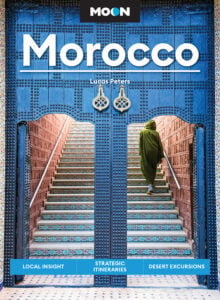When you visit the country of Morocco you will undoubtedly find yourself immersed in quite a bit of Muslim culture. There are numerous moussems – or Muslim festivals – held throughout the year and being in the country during one of them is something that cannot be avoided. If you are lucky, you may actually be able to witness one of these festivals during your own vacation. If you do, it will be a memorable experience. One of the best festivals not to miss is the Berber Bride Festival held annually in Imilchil.
Every late September the festival of Imilchil is held. It has become one of the most celebrated and famous Muslim festivals in the world. The festival itself however calls for the wearing of colorful clothing, social interaction and dancing.
You see, the festival of Imilchil is also known as the Berber Bride Festival–a time of year where young girls and boys – and some men and women – come from different villages around Imilchil to find a husband or a wife. If you’d love to see it, contact our team at Journey Beyond Travel in Morocco.
Legend Around The Morocco Festival
The festival of Imilchil was born from the legend of Tislet and Isli. Two young lovers, Tislet and Isli were from enemy Berber tribes that lived in the Atlas on a trek of Morocco. They were deeply in love, but their parents – who became angered by their children when they found out what they had been doing – adamantly refused to allow them to marry which subsequently broke Tislet and Isli’s hearts. The couple refused to live apart so they exchanged vows under the watchful eye of Allah before throwing themselves into two lakes that today bear their names.
But the young lovers were destined to be apart no matter what. Even in death they are unable to unite as the imposing mountain between their two lakes acts like a guard, standing between them so that their spirits reach for each other eternally never to touch or join. The act devastated all of the clans of the Berber tribes in the Ait Haddidou region and it prompted the village parents to announce that from that point on, they would allow the children the right to choose their own husbands and wives.
Since then, the men and women of the Ait Haddidou region of Morocco descend upon Imilchil each September to find themselves a mate. The festival is held high in the lake plateau area of the Middle Atlas Mountains near the burial place of Sidi Mohamed El Maghani, the patron saint of the area. It is believed that any marriage blessed by the saint were long lasting and happy.
Witnessing The Morocco Festival
The festival is as much a ‘family reunion’ as it is wedding as many people from the fifty-five tribes of Berber come here for the Festival. Only recently have the Berbers accepted visitors to Imilchil and the festival to take part in this happy time. Of course, the climb to the festival’s location is not for the faint of heart and it keep the amount of outsiders to a nice minimum each year, much to the resident’s relief. Your Morocco Itinerary should include a trip here if you have the stamina to climb.
The Berber’s who attend the festival have gotten used to visitors and they open their tents wide to people who manage to make it up into the high Atlas. If you are respectful of the men and women involved in the ceremony, you will find that your hosts are quite charming and willing to share everything they have with you – from food to lodging. The more discretion you show, the better you will be treated by the Berbers during the festival.
In between the main activities of the Imilchil festival, you will want to explore the area and take in the beautiful views of the area. You can travel to the lakes named after the festival’s doomed lovers and when you return to Imilchil, you will find your Berber hosts ready to enjoy an evening around the campfire singing, dancing, and enjoying a hearty meal of some authentic Berber cooking.
The Festival of Imilchil is truly a romantic one as many of the men and women that come to find mates have met before in the small villages that occupy the area. You will be able to witness a courtship ritual that spans centuries and you will see men and women pair up for weddings that take place during the festival and ones that promise themselves to one another as soon as they are old enough to marry.
If the lucky bride and groom marry before you, you will know. The bride will leave the ceremony with her new husband with her face veiled from view.
by Sam Mitchell









thanks for this beautiful articl, it’s a very interested one, but I have detected one error in that articl which is may be related to what you have heard about this region. this error related to marriage; in marriage people do not choose thier husband/wife in the day of the festival but they have already known each other in thier villages and they come to the festival in order to save thier engagement in the judge’s office.
Thank you for pointing this out, Said.